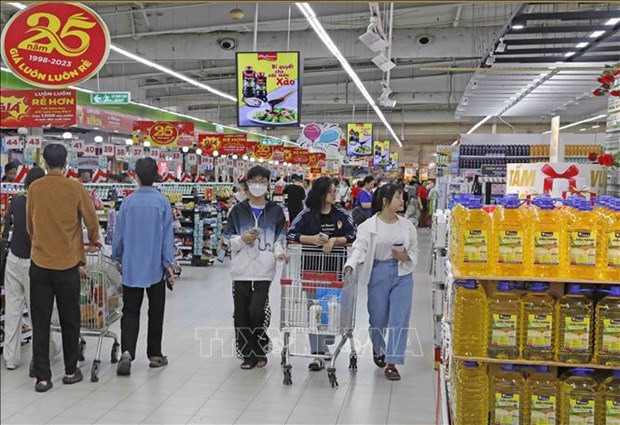Vietnam’s economy has made good recovery since the beginning of this year; however, inflation risks could weight on the country’s growth outlook, according to experts.
 |
| Price stabilisation fund should be used to restrain increases in petrol prices. (Photo: VNA) |
Vietnam’s economy has made good recovery since the beginning of this year; however, inflation risks could weight on the country’s growth outlook, according to experts.
With the Government’s effective and flexible policies, the inflation rate has been curbed in line with the target of under 4.5 percent set by the National Assembly. The average consumer price index (CPI) during January-September rose 3.16 percent as compared to the same time last year.
According to the General Statistics Office (GSO), there are several robust economic signs, holding out much hope of a strong recovery that could bring the economy into a new growth period in the end of this year.
A recent survey showed that 30.1 percent of processing and manufacturing firms said their business in Quarter 3 is much better than Quarter 2, and 39.1 percent of the enterprises expected a rosier business situation in Quarter 4.
Economists described strong purchasing power as a locomotive for economic expansion in the three quarters, with total revenue from retail sales and services estimated at more than 4.5 quadrillion VND (184.5 billion USD), up 9.7 percent year-on-year.
The increase in the revenue was spurred by a rise in CPI in recent months, which was up from 0.45 percent in July to 0.88 percent in August and 1.08 percent in September.
The GSO said that increases in tuition fees, petrol prices and housing rent were the main reasons that pushed the September’s CPI growth to the highest level in the past five years.
According to Nguyen Thu Oanh, head of the GSO’s Price Statistics Department, there are several factors that could pose risks to the CPI in the remainders of this year, including increasing food prices, a 20 percent surge in base salary from July 1, and high purchasing demand for festivals and Tet holiday.
An expansion in production costs of agro-forestry-fishery products (3.26 percent), and services (7.34 percent) during January - September may accelerate the CPI in Quarter 4 if no effective control measures are put in place, she said, adding augmentation of the world’s oil prices driven by Saudi Arabia and Russia’s oil cuts is another risk for the CPI.
Meanwhile, former GSO Director General Nguyen Bich Lam said that the US Federal Reserve could raise interest rates in pursuit of bringing inflation rate to the country’s set target, creating pressure on the VND-USD exchange rate.
He pointed to a surge in power prices as another factor that affect the market prices toward the end of 2023 and even in the beginning of 2024.
 |
| Consumers at Big C Thang Long supermarket (Photo: VNA) |
With a view to putting inflation rate in the remaining three months of this year under control, Lam suggested competent sides continue implementing measures to balance supply and demand, especially in the field of food which has an important role to play in ensuring social welfare.
The Ministry of Agriculture and Rural Development should outline measures to curb the prices of animal feed, he said, explaining an increase in the prices could bring difficulties for the livestock production and businesses and farmers, thus affecting food supply.
He recommended appropriate use of the price stabilisation fund to restrain increases in petrol prices, while suggesting the Government give subsidy to sectors where petrol prices account for a large proportion in the production costs.
Furthermore, the Government should pay due regard to the communications work to prevent inflation expectations at a time when the country and the world experience unfavourable economic developments.
Source: vietnamplus








Thông tin bạn đọc
Đóng Lưu thông tin